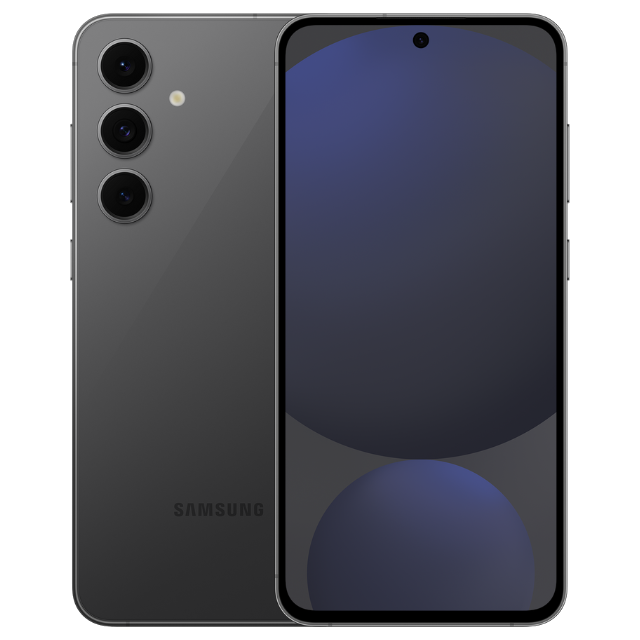Is your phone battery not lasting as long as it used to? A battery's ability to hold a charge degrades over time. And while iPhones have always had a battery health feature, Android manufacturers have only recently started adding the feature. Besides, phones that do not have the feature can still see the battery health with third-party apps. Here's how to check battery health in Android.
Know battery health on OnePlus, Oppo and Realme phones
You can not only check battery health on a Pixel but also on OnePlus, Realme and Oppo phones. The UIs on each of the phones provide a direct way to check your battery health, and the option can be found in the battery settings. In this instance, we're checking out the process of accessing the Battery health inside OxygenOS, but the steps may remain more or less the same on ColorOS or Realme UI.
- Head over to Settings > Battery and tap on Battery health.

- The percentage beside the Maximum capacity text is your current battery health percentage.
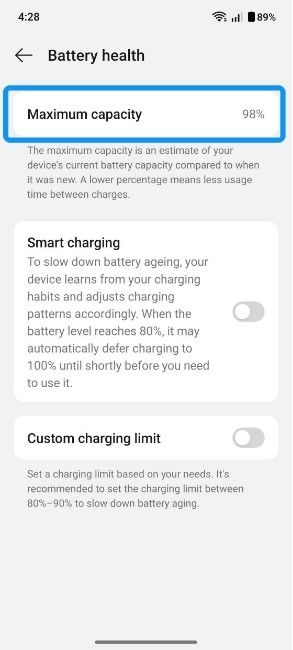
- The Battery health screen also contains options like Smart charging and the ability to set a Custom charging limit if you want to slow down the degradation of your phone's battery.
A battery health of above 80% is generally considered okay, while a number above 90% means it's pretty new. Your phone will begin slowing down if the battery health drops below 75%. In which case, you might want to check Oppo phone model and get it replaced. Also, check the warranty status of Oppo phone, as you might get away with a free replacement under warranty.
Check battery health on Xiaomi, Poco and Redmi phones
Xiaomi and its associated brands also preview the battery health rating on their recent phones. Here's how to check the battery health iside HyperOS:
- Head over to Settings > Battery and tap on Battery protection.

- You should then see the Battery health percentage beside the Battery health text.
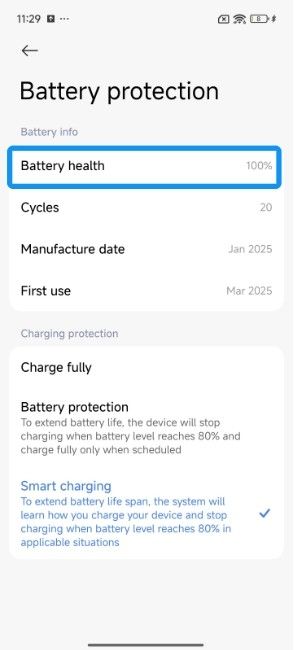
- Unlike other manufacturers, Xiaomi, Poco and Redmi also show you the number of charge cycles and the date of first use.
Find your Vivo or iQOO phone's battery health
Like OnePlus, Vivo and iQOO are also among the few manufacturers that include a built-in battery health feature in OriginOS. Here's how to find it:
- Head over to Settings > Battery and go to Battery health and charging.
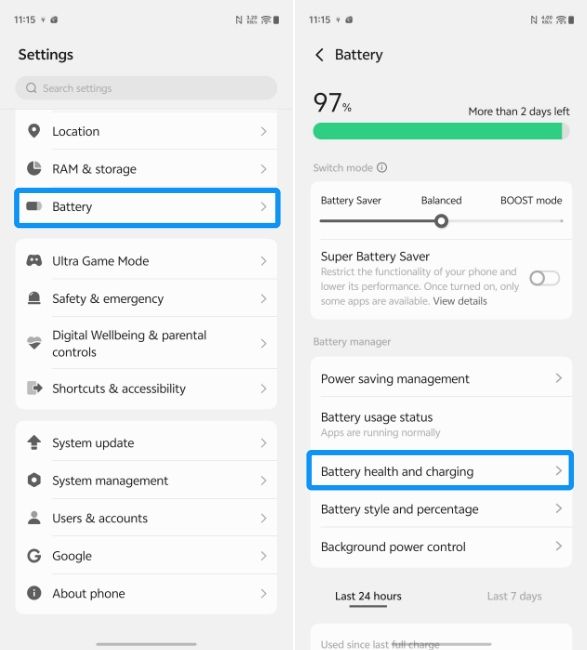
- You should see the Battery health percentage at the top beside the Maximum battery capacity text.
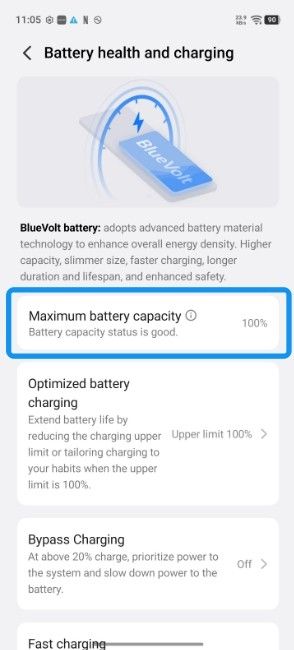
Check battery health in other Android phones
For phones that don't have a built-in battery health feature (including Nothing and Motorola), a third-party app can help you find out the battery percentage. The app is called AccuBattery, and here's how to set up and use it.
- Head over to the Play Store and install AccuBattery.
- Launch the app and go through the setup process. The app will automatically calibrate your battery.
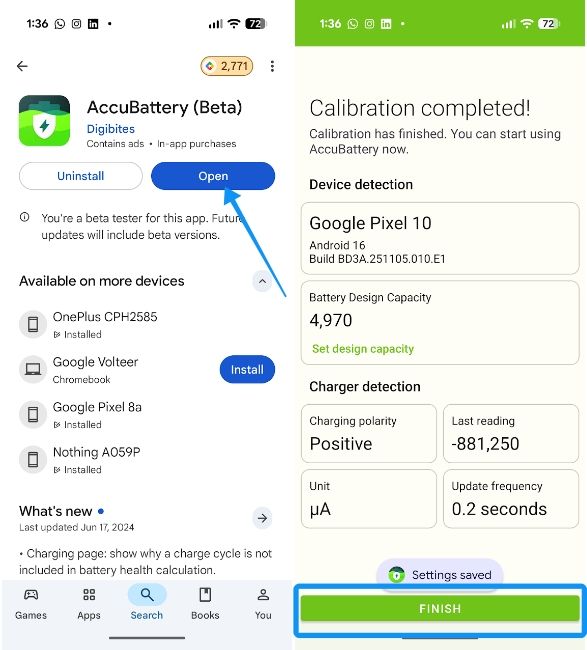
- Allow all the necessary permissions and charge your phone to 100% when the battery drops below 15% to be considered a full charge.
- Go to the Health tab to see the battery health percentage. It usually appears after two to three full charges.

While not the quickest way to find out the battery health percentage, it works well. The feature might not show the most accurate battery health percentage in the first few charge cycles, so we recommend charging your phone from 15% to 100% for at least a week for more accurate insights.
If your Battery health percentage is well above 90%, and you're facing severe battery drain, it could be due to a recent app that you installed. In which case, we recommend enabling and turning off Safe mode on Android.
And those are all the ways to check Battery Health on an Android phone. Since Android added support for the battery API back in Android 14, more manufacturers are working toward bringing the Battery health feature to their UIs. If you have an older device that's no longer getting updates, you can still check the battery health percentage using AccuBattery.


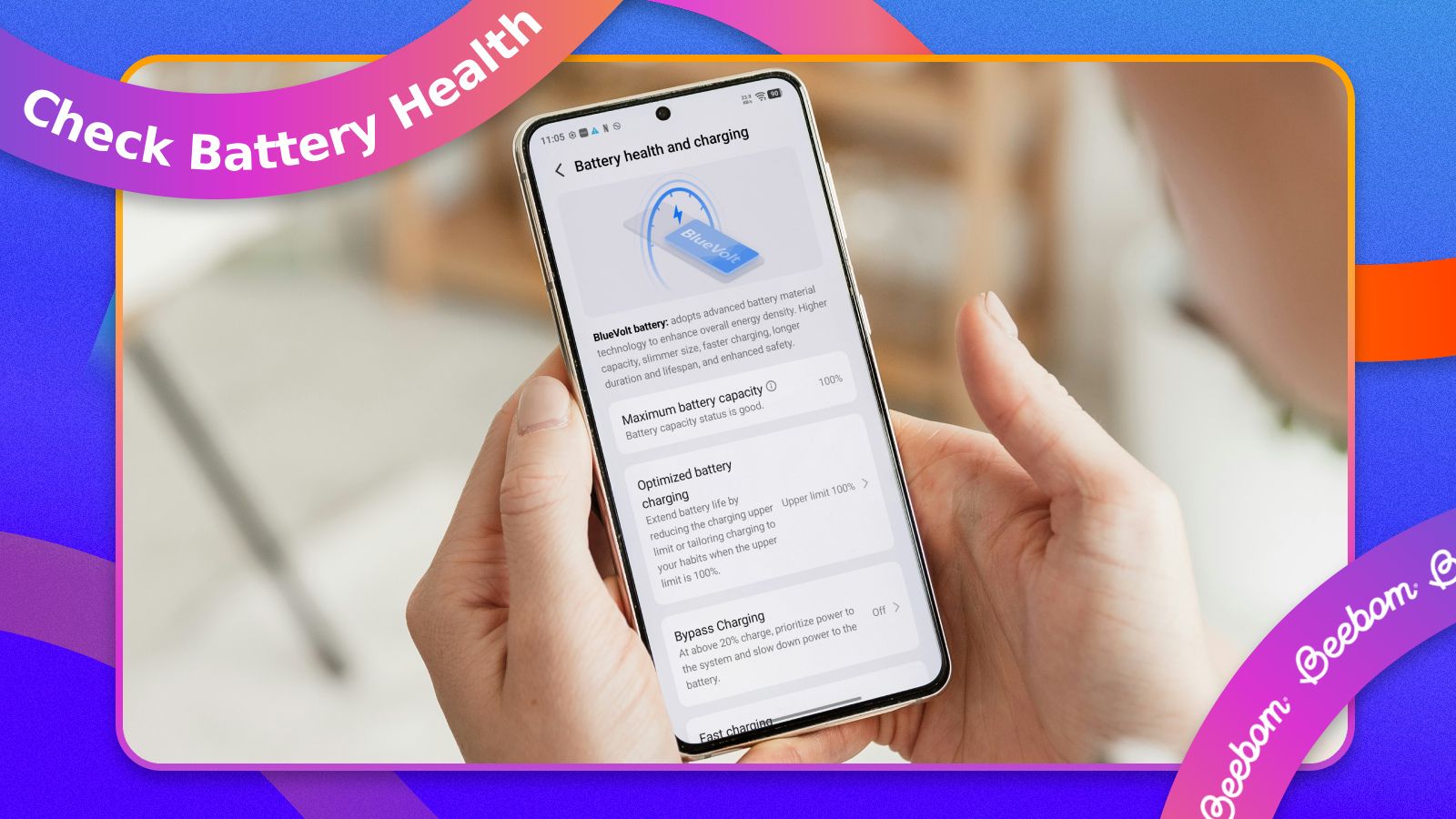
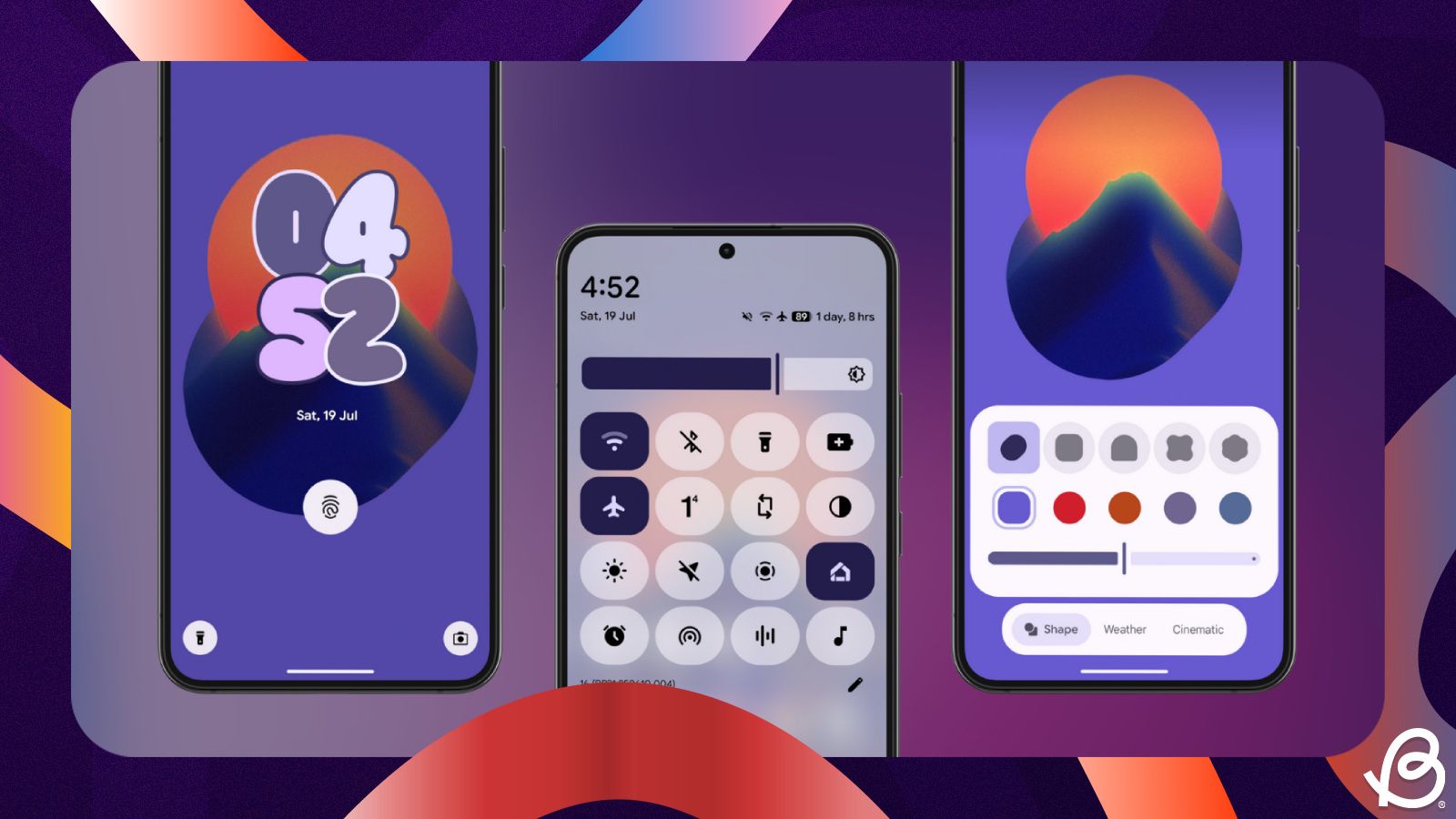
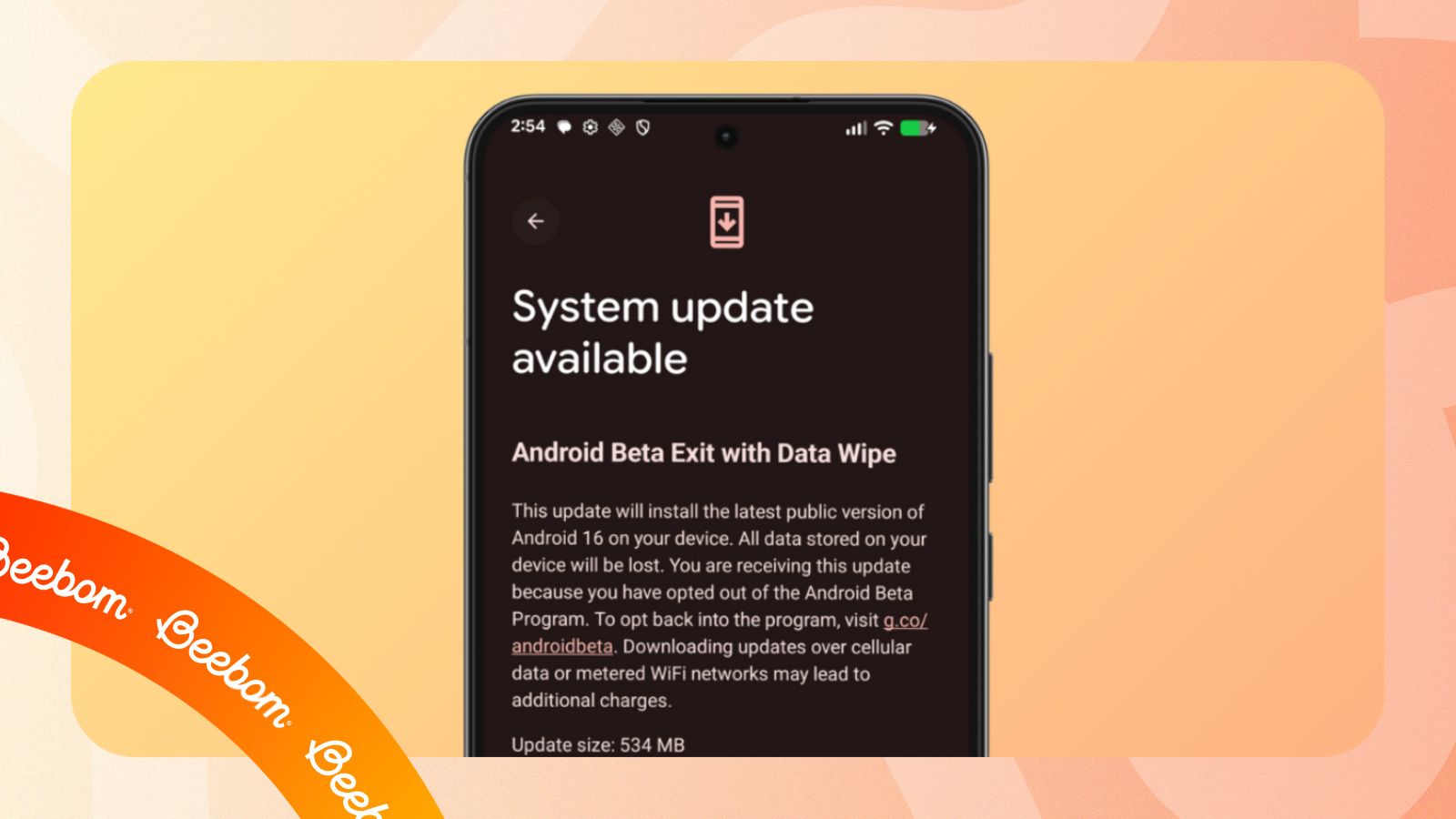

.jpg)






